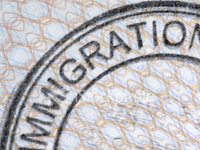
Doors opening for overseas workers
The new initiative to import workers for particular jobs in hospitality and tourism has met with mixed feelings by the industry.
In essence, the new agreement may streamline access and approval for temporary overseas employment.
The federal government unveiled a template labour agreement to address worsening skills shortages in the tourism and hospitality sectors by attracting skilled workers from overseas. Using the template, dubbed Labour Agreement for the Tourism and Hospitality Industry, approved employers will be able to nominate workers for temporary skilled 457 visas.
It is the result of discussions with industry members at the Tourism Employment Roundtable hosted by minister for tourism Martin Ferguson in August 2011. The Labour Agreement for the Tourism and Hospitality Industry paper is part of an updated National Long-term Tourism Strategy, Tourism 2020.
The industry is being invited to comment on the list of eligible businesses, salary, skill levels and English language requirements. A discussion paper is open for comment until March 16 and can be found at www.tourism.gov.au/labour.
 |
| AHA COE, Des Crowe |
Aiming to reduce the industry’s shortage of skilled workers, the initiative created by the minister for immigration and citizenship Chris Bowen and Mr Ferguson, the agreement is designed to assist the industry attract international workers by creating a common set of requirements tailored specifically for tourism businesses recruiting overseas workers. Minister Ferguson explained that with 36,000 vacancies expected in the industry by 2015, addressing the need for new labour was critical.
He said there was a particular need to for requirement in regional areas.
Including recruitments for waiters, chefs, bar attendants, hotel managers and other occupations, Mr Bowen added that the agreement balances between visa recruitments while also allowing Australian businesses to locate and reach skilled workers.
“Approved employers could nominate workers for temporary skilled subclass 457 visas using the template, enabling workers to be granted visas where they meet the requirements,” he said. “Of course, employers would need to show they are doing their best to employ and train domestic workers and paying market rates.”
The Australian Hotels Association has criticised the new Labour agreement template as missing the mark. The AHA has long lobbied for the template and welcomes its announcement but argues that it is ‘the tip of the iceberg’.
“Many of the industry’s labour needs are in lower level positions which do not fit the minimum skills and qualification requirements of existing working visa categories,” said AHA CEO, Des Crowe. “Overcoming the chronic shortages of labour will require the government to overturn some of its recent policy decisions that have disadvantaged the industry.”
Stakeholders suggest that more attention should be given to policy on visas and the funding of apprenticeships and traineeships.
“The Pacific Seasonal Worker Pilot scheme will provide welcome temporary access to overseas workers from East Timor, with the potential for the program to be expanded at a later date but more avenues to semi-skilled overseas workers are required to address industry labour shortages.”
Tourism Accommodation Australia is looking forward to working closely with the government in reviewing the template, and counteracting the issues that make employment in the tourism industry unappealing, including unsociable hours and more tempting employment prospects in other industries, Rodger Powell, managing director of TAA said.
“People can earn a lot more money working in mining than they can in tourism and yet having said that, we have the highest labour cost structure in tourism, particularly hospitality jobs, in the world, so our whole cost base is distorted by the high cost of labour.
“I recently had a five-star hotel GM tell me that they throw a party if they get two applications for a job. The fact is we’re just not getting young Australians applying for those jobs,” he said.
Tourism and Transport Forum chief executive John Lee said the paper was a “welcome initiative” and urged tourism businesses to offer their feedback.
“Having a template will reduce their administrative burden by streamlining the application process, so we would encourage businesses to take this opportunity to have their say on how the template should look, which businesses are eligible, as well as included occupations, salary, skill levels and English competency,” he said.
Meanwhile the states are battling their own employment strategies with mixed success.
In NSW, the first month of a scheme whereby employers are paid subsidies at the average rate of the dole for six months has been deemed a success. More than 340 long-term unemployed have been given work under the scheme.
However a relocation scheme that pays workers to move to where the jobs are has been less successful.
Employers are demanding that the SA government drop its plan to declare part-holidays after 5pm on Christmas Eve and New Year’s Eve. They have also launched a stinging attack on Business SA for agreeing to the “bizarre” deal they say significantly increases labour costs of most employers.
The changes to the Holiday Act 1910 aim to bring SA into line with other states.
But employers and retailers are furious that the part-holidays give workers the right to earn penalty rates 2.5 times above their normal hourly pay rate.

AccomNews is not affiliated with any government agency, body or political party. We are an independently owned, family-operated magazine.







